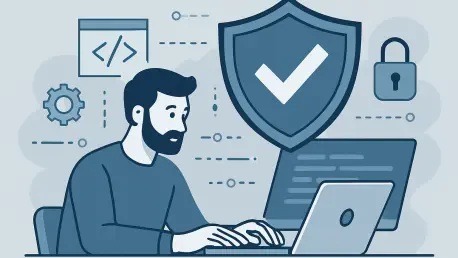In an era where software dictates the rhythm of daily life, from managing personal finances through mobile apps to ensuring the safety of air travel with complex control systems, the stakes of digital reliability have never been higher, and a single glitch can unravel critical operations. Such failures can lead to financial devastation, compromised security, or even tragic loss of life. Beneath this vast digital landscape lies an often-overlooked foundation: software standards. These guidelines, meticulously crafted to govern how software is designed, developed, and maintained, serve as the invisible shield protecting society from the chaos of unchecked technology. Far from being mere technical jargon, they are the bedrock of trust in a world increasingly reliant on digital solutions. This exploration delves into the profound importance of these standards, shedding light on how they safeguard against catastrophic failures while paving the way for innovation, ensuring that progress does not come at the expense of safety.
The Devastating Impact of Software Failures
The consequences of software errors extend far beyond minor inconveniences, often spiraling into disasters with global ramifications. Consider the 2024 CrowdStrike incident, where a poorly managed software update caused widespread disruption to businesses across multiple industries, halting operations and exposing vulnerabilities. Similarly, the Boeing 737 MAX tragedies revealed how software flaws could contribute to fatal accidents, shaking public confidence in aviation safety. These high-profile cases underscore a critical reality: when software fails, the fallout can be catastrophic, affecting millions and costing billions. Software standards emerge as a vital defense mechanism in this context, providing structured methodologies to identify and mitigate risks before they escalate. By enforcing rigorous testing and validation processes, these guidelines help prevent lapses that could otherwise lead to irreversible damage, preserving the integrity of systems society depends on every day.
Moreover, the ripple effects of such failures often extend into the public psyche, eroding trust in technology that underpins modern life. Financial systems, healthcare platforms, and transportation networks all rely on software to function seamlessly, yet a single breach or malfunction can unravel years of built-up confidence. Standards play a crucial role in averting these crises by establishing benchmarks for quality and reliability that developers must meet. They act as a preemptive barrier, ensuring that software is built with foresight to withstand real-world pressures. Beyond immediate prevention, adherence to these protocols signals to users that safety is prioritized, helping to maintain faith in digital infrastructure. Without such measures, the risk of recurring incidents would loom larger, threatening not just operational stability but also the societal acceptance of technological advancements that shape the future.
Building Efficiency and Innovation Through Standards
Software standards do more than just protect against failure; they also streamline the development process, creating efficiencies that benefit the entire tech ecosystem. By offering clear frameworks for critical aspects like user authentication, data encryption, and quality assurance, these guidelines eliminate the need for developers to reinvent solutions to common problems. This structured approach saves significant time and resources, allowing teams to allocate their energy toward addressing novel challenges rather than duplicating efforts on solved issues. Think of standards as a shared blueprint—a foundation that ensures consistency across projects while reducing costly errors. In this way, they transform the development landscape into a more collaborative and productive space, where the focus shifts from redundant troubleshooting to pushing the boundaries of what technology can achieve.
Far from being a barrier to creativity, software standards actually enable innovation by providing a stable platform upon which new ideas can flourish. When developers are freed from the burden of repeatedly solving fundamental issues, they can channel their expertise into exploring uncharted territories, such as artificial intelligence or quantum computing. Standards ensure that the basic building blocks of software remain reliable, giving engineers the confidence to experiment without fear of undermining core functionality. This balance between structure and freedom is essential in a field where rapid advancements are the norm, yet safety cannot be compromised. By embedding proven practices into the development cycle, standards foster an environment where groundbreaking solutions can emerge without sacrificing the trust and dependability that users expect from digital tools in their everyday lives.
Shaping Future Engineers with Responsible Practices
The significance of software standards extends into the realm of education, where they play a pivotal role in preparing the next generation of developers for the challenges ahead. Rather than encouraging students to approach every problem as if it were entirely new, a more effective method involves teaching them to build upon established solutions while tackling fresh obstacles. This hybrid learning model instills a sense of responsibility, emphasizing that coding is not just about functionality but also about sustainability and safety. Experts in the field, such as Lynn Robert Carter, advocate for embedding these principles into curricula, ensuring that aspiring engineers understand the importance of adhering to guidelines from the outset. Such an approach equips them with the mindset to create software that not only works but also withstands the test of real-world application without posing risks.
Additionally, integrating standards into education fosters a deeper appreciation for the ethical dimensions of software development. Students learn that their work impacts lives, whether through applications managing personal data or systems controlling critical infrastructure. By grounding their training in proven methodologies, educational programs help future professionals recognize the weight of their decisions and the value of rigorous processes. This perspective shift is crucial in an industry where errors can have far-reaching consequences, as it encourages a culture of accountability. Beyond technical skills, this focus on standards cultivates a commitment to quality that persists throughout a developer’s career, ensuring that the software shaping tomorrow’s world is built with care and foresight, safeguarding society against preventable failures in an ever-evolving digital landscape.
Harnessing Global Collaboration for Stronger Standards
The creation of software standards is not a solitary endeavor but a testament to the power of global collaboration among diverse stakeholders. Bodies like the Institute of Electrical and Electronics Engineers (IEEE) Software & Systems Engineering Standards Committee (S2ESC) exemplify this by uniting experts from multinational corporations, small startups, and independent developers to define best practices. This collective effort ensures that the resulting guidelines are not only comprehensive but also accessible, catering to organizations of all sizes and sectors. With nearly five decades of contributions, such initiatives demonstrate how shared expertise can build a robust framework that enhances safety and reliability across the digital sphere. The inclusive nature of this process amplifies the reach and impact of standards, creating a unified approach to tackling the complexities of modern technology.
Furthermore, this collaborative spirit allows standards to remain relevant amidst rapid technological shifts, adapting to new challenges as they arise. By drawing on a wide pool of knowledge, these committees can anticipate emerging risks and integrate solutions into updated guidelines, ensuring that software development keeps pace with innovation. This dynamic process also democratizes access to high-quality practices, enabling smaller entities without vast resources to implement the same level of rigor as industry giants. The result is a more equitable tech landscape where safety is not a privilege but a universal expectation. As software continues to permeate every facet of life, the importance of such global teamwork grows, reinforcing the idea that a safer digital world is a shared responsibility, achieved through the combined efforts of a connected community dedicated to excellence.
Evolving Standards for a Dynamic Technological Future
As technology advances at an unprecedented pace, software standards must continuously evolve to address the complexities of an interconnected world. No longer viewed as static or restrictive, these guidelines are now recognized as adaptable tools that strike a delicate balance between ensuring safety and encouraging innovation. With software becoming increasingly integral to sectors like healthcare, transportation, and finance, the potential for systemic failures grows alongside its benefits. Standards must therefore be updated to tackle emerging threats, such as cybersecurity vulnerabilities or the ethical implications of artificial intelligence. This ongoing refinement ensures that rapid progress does not undermine the reliability that users depend on, maintaining a foundation of trust even as new frontiers are explored in the digital realm.
Moreover, the adaptability of standards reflects a broader industry shift toward proactive risk management in response to technological change. By anticipating future challenges and embedding safeguards into development practices, these guidelines help mitigate issues before they become crises. This forward-thinking approach is essential in a landscape where interconnected systems amplify the impact of even minor errors, potentially disrupting entire networks. Standards also provide a common language for developers worldwide, facilitating collaboration on cutting-edge projects without sacrificing quality. As the digital environment grows more intricate, the role of evolving standards becomes even more critical, ensuring that innovation is pursued responsibly, with safety as a non-negotiable priority for every advancement that shapes society’s future.









